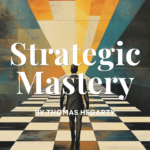
The Kaleidoscope of Innovation: Embracing Multidisciplinary Approaches

The Kaleidoscope of Innovation: Embracing Multidisciplinary Approaches
In today’s rapidly evolving business landscape, the ability to innovate is not just a competitive advantage—it’s a survival skill. But innovation doesn’t happen in a vacuum; it thrives in environments where diverse ideas and perspectives come together. This is where multidisciplinary approaches come into play, offering a kaleidoscope of possibilities that can lead to groundbreaking advancements.
The Power of Multidisciplinary Innovation
At its core, innovation is about creating something new and valuable. However, the process of innovation is often challenging because it requires breaking away from traditional thinking patterns and exploring uncharted territories. This is where the magic of multidisciplinary approaches happens. By integrating knowledge and methodologies from various fields, businesses can foster a culture of creativity that transcends traditional boundaries.
Consider the development of the smartphone, a ubiquitous device that combines elements of computer science, telecommunications, design, and user psychology. By drawing on diverse disciplines, innovators were able to create a product that not only meets a fundamental need but also enhances the way we live and work.
Fostering Creativity Through Cross-Disciplinary Collaboration
For small business owners and entrepreneurs, the idea of leveraging multidisciplinary approaches might seem daunting. However, it is an attainable strategy that can be integrated into any business model, regardless of industry. Here are some practical tips to cultivate this innovative mindset:
1. Build Diverse Teams
Diversity in teams goes beyond demographics. It includes diversity of thought, experience, and expertise. When assembling teams for projects, look for individuals with varied skill sets and backgrounds. Encourage them to share their unique perspectives and challenge conventional thinking.
2. Encourage Curiosity and Lifelong Learning
Innovation thrives in environments where curiosity is encouraged. Promote a culture of lifelong learning by offering opportunities for employees to explore new fields and acquire skills outside their primary areas of expertise. This not only enhances individual creativity but also enriches the collective problem-solving capabilities of the team.
3. Create Spaces for Cross-Pollination of Ideas
Facilitate regular interactions between different departments and teams. This can be achieved through workshops, brainstorming sessions, and even informal gatherings where employees from various functions can share insights and collaborate on projects. Such interactions often spark innovative solutions that would not have emerged in siloed environments.
Case Studies: Innovation Through Multidisciplinary Approaches
To understand the impact of multidisciplinary approaches, let’s explore a few real-world examples:
Case Study 1: IDEO’s Human-Centered Design
IDEO, a global design company, is renowned for its human-centered, multidisciplinary approach to innovation. By integrating expertise in design, engineering, and social sciences, IDEO has developed a wide range of products and services that prioritize user experience. Their success illustrates the power of blending diverse fields to create solutions that resonate with people.
Case Study 2: Google’s “20% Time” Policy
Google’s famous “20% time” policy allowed employees to dedicate a portion of their workweek to projects outside their usual responsibilities. This freedom led to innovations like Gmail and Google News. By encouraging employees to explore their passions and interests, Google harnessed the power of multidisciplinary creativity to drive groundbreaking innovations.
Overcoming Challenges in Multidisciplinary Innovation
While the benefits of multidisciplinary innovation are clear, implementing such approaches does come with challenges. Differences in terminology, methodologies, and objectives can lead to misunderstandings. To overcome these obstacles:
1. Foster Effective Communication
Promote open and clear communication across all levels of the organization. Encourage team members to express their ideas and concerns, and invest in tools and training that enhance communication skills.
2. Establish Common Goals
Ensure that all team members are aligned with the project’s objectives. Having a shared vision helps unify diverse perspectives and keeps everyone focused on the end goal.
3. Embrace Flexibility and Adaptability
In multidisciplinary projects, unexpected challenges are likely to arise. Cultivate a culture of flexibility and adaptability to navigate these challenges and pivot when necessary.
Conclusion: The Future of Innovation
As we look to the future, the importance of multidisciplinary approaches in driving innovation will only continue to grow. For small business owners and entrepreneurs, embracing this mindset can unlock new opportunities for growth and success. By building diverse teams, fostering curiosity, and creating spaces for idea exchange, businesses can harness the full potential of multidisciplinary innovation, turning challenges into opportunities and ideas into reality.
The kaleidoscope of innovation is vibrant and ever-changing, offering endless possibilities for those willing to embrace its complexity. By stepping beyond the confines of single-discipline thinking, we can create a future rich with innovation and creativity.












Recent Comments